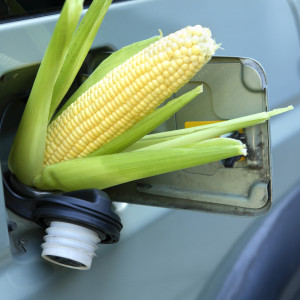It’s become a yearly ritual: EPA releases wildly unrealistic quotas mandating the amount of cellulosic biofuels to be blended into the nation’s fuel supply. Then, facing litigation, the agency revises requirements downward months later when it becomes undeniable the fuel doesn’t exist – at least not in viable quantities. For 2013, EPA mandated the fuel industry blend 6 million gallons of the alternative fuel made from wood, grass and plant materials. Only 810,185 gallons were actually produced all year. Undaunted, the EPA has proposed a mandate for 17 million gallons for 2014, despite the fact that less than 60,000 gallons have been produced to date this year.
So it goes in the alternate universe inhabited by the Renewable Fuel Standard (RFS) under which the amount of biofuels – both corn-based and cellulosic – must increase automatically every year regardless of demand or market conditions.
The RFS was enacted in 2007 based on projections that U.S. fuel consumption would steadily rise, increasing our reliance on imported energy. Both those assumptions have proved false. Due to the recession and improvements in fuel efficiency, Americans are buying less gas. Gasoline consumption for 2013 ended up 17 billion gallons lower than the Energy Information Agency (EIA) projected back in 2007. But the EPA refused to adjust ethanol requirements accordingly. Applying 2007 ethanol volume requirements to 2014 market conditions would mean the fuel industry is required to blend more and more gallons of ethanol into shrinking volumes of fuel.
If we continue on this trajectory, it’s nothing but bad news for consumers. American households are already feeling the pinch of inflated food prices. Ethanol production has diverted more than 40 percent of the U.S. corn crop from food to fuel, leading to a 25 percent increase in the consumer price index for food since 2005.
Drivers could end up needing that extra grocery money to pay the mechanic. In order to keep up with its own unreasonable targets, the EPA approved a fuel blend with 15 percent ethanol content (E15) despite the fact that extensive testing by the auto and fuel industries shows that E15 could lead to engine damage. AAA has warned that 95 percent of cars on the road today are not manufacturer-approved to use fuel blends above E10.
With so much potential damage tied to the RFS, it’s hard to single out just one worst-case scenario. But the overall economic harm projected by a NERA Economic Consulting study is a good contender. The study found that continued RFS implementation could lead to fuel rationing and supply shortages that could drive up gasoline costs by 30 percent and the cost of diesel by 300 percent by 2015 – decreasing worker income by $580 billion.
It’s no wonder that a broad coalition made up of motorcycle associations, marine manufacturers, power equipment producers, restaurant associations, grocers and producers of poultry, pork and beef have banded together to speak out against unsustainable ethanol requirements. Anti-hunger groups and environmental organizations have also expressed concerns about the RFS corn ethanol mandates. With EPA analysis indicating corn-based ethanol yields 27 percent more greenhouse gases over its full lifecycle compared to regular gasoline, it’s hard to justify keeping the mandate alive.
The good news is we’ve achieved one of the primary goals of the RFS: reducing imports. Total U.S. net imports of energy for 2013 dropped to their lowest level in more than two decades but not because of the RFS. Technological advances in hydraulic fracturing coupled with horizontal drilling have ushered in an American energy revolution. We now lead the world in natural gas production and are on track to surpass Saudi Arabia in oil production by next year. At the same time carbon dioxide emissions from energy dropped 12 percent between 2005 and 2012 to reach their lowest level since 1994 – another goal of the RFS, but one that has been largely driven by greater availability of cleaner-burning domestic natural gas.
Nearly every assumption that guided the development of the RFS in 2007 is obsolete today. If the EPA will not align its mandates with reality, it’s time for Congress to step in and repeal the RFS before it causes significant economic harm.

